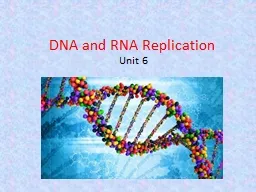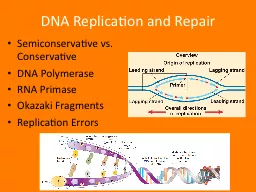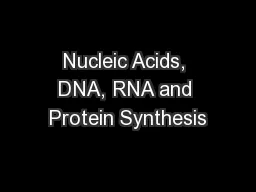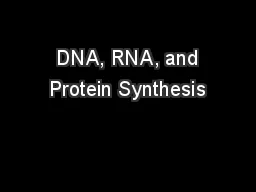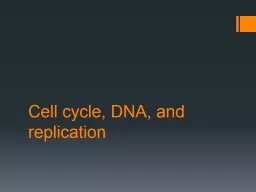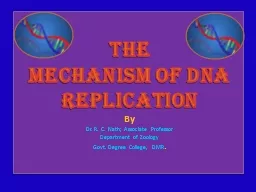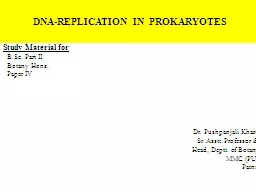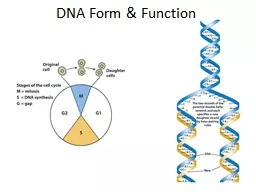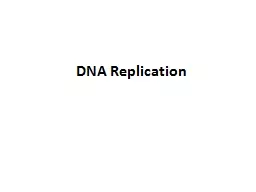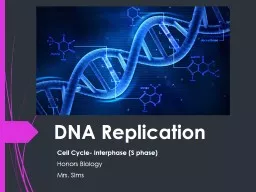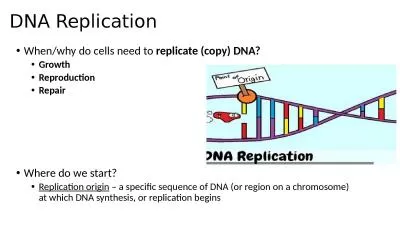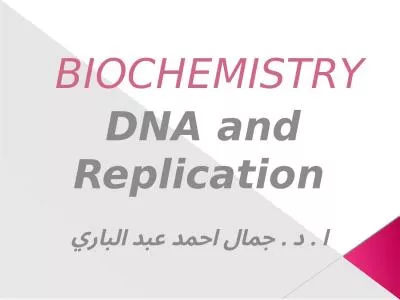PPT-DNA and RNA Replication Unit 6
Author : deena | Published Date : 2022-06-11
Something to think about When a species reproduces there is genetic continuity maintained from one generation to the next WHAT is responsible for this continuity
Presentation Embed Code
Download Presentation
Download Presentation The PPT/PDF document "DNA and RNA Replication Unit 6" is the property of its rightful owner. Permission is granted to download and print the materials on this website for personal, non-commercial use only, and to display it on your personal computer provided you do not modify the materials and that you retain all copyright notices contained in the materials. By downloading content from our website, you accept the terms of this agreement.
DNA and RNA Replication Unit 6: Transcript
Download Rules Of Document
"DNA and RNA Replication Unit 6"The content belongs to its owner. You may download and print it for personal use, without modification, and keep all copyright notices. By downloading, you agree to these terms.
Related Documents

